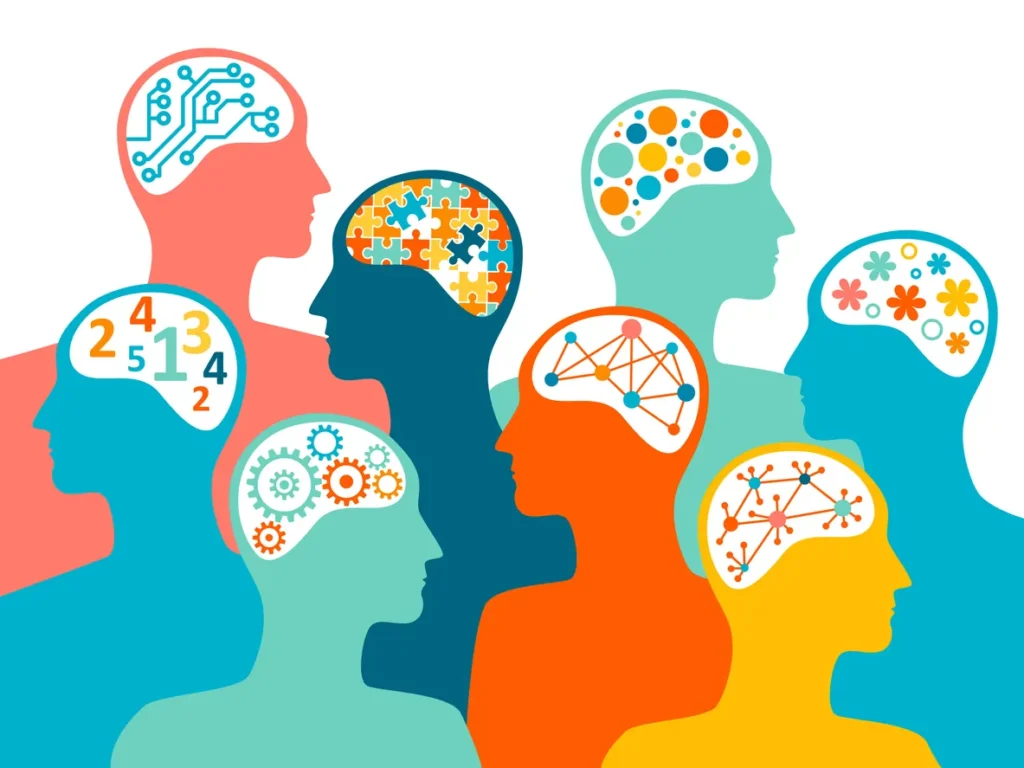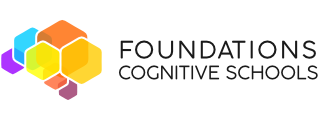
Story at-a-glance
- Neurodivergence is natural brain variation – Conditions like ADHD, autism, dyslexia, and other learning differences represent natural variations in how brains develop and function, not defects that need fixing.
- Different doesn’t mean deficient – Neurodivergent brains often come with remarkable strengths like enhanced creativity, pattern recognition, innovative thinking, and unique problem-solving abilities that benefit both individuals and society.
- Society shapes disability, not just biology – Many challenges faced by neurodivergent individuals stem from environments and systems designed for neurotypical brains rather than from inherent limitations in their neurological differences.
- Celebration and accommodation go hand in hand – Recognizing neurodivergent strengths while providing appropriate support and accommodations creates the best outcomes for children who learn and think differently.
For too long, conversations about learning differences have centered on deficits, disorders, and what needs to be “fixed.” But a growing movement is shifting this perspective, recognizing that neurological differences like ADHD, autism, dyslexia, and other learning variations aren’t flaws to be corrected but natural forms of human brain diversity that bring unique strengths and perspectives to our world.
This neurodiversity movement doesn’t deny that learning differences can create challenges or minimize the real struggles that neurodivergent individuals face. Instead, it reframes these differences as natural variations in human neurology – much like we accept and celebrate differences in height, eye color, or personality. Just as biological diversity strengthens ecosystems, neurological diversity strengthens human communities by bringing different ways of thinking, processing information, and solving problems.
Understanding your child’s neurodivergence through this lens can be transformative for both of you. Instead of focusing solely on what your child struggles with, you can begin to recognize and celebrate the unique gifts that often accompany different neurological wiring. This perspective doesn’t eliminate the need for support and accommodation, but it provides a foundation of acceptance and appreciation that can fundamentally change how your child sees themselves and their potential.
Understanding Neurodiversity and Neurodivergence
Defining the Terms
Neurodiversity refers to the idea that neurological differences are natural variations in human brain development and function. Just as we have biodiversity in nature, we have neurodiversity in human populations. This concept recognizes that there’s no single “normal” or “correct” way for brains to function.
Neurodivergent describes individuals whose brain development and function differ from what society considers typical or “neurotypical.” This includes people with ADHD, autism, dyslexia, dyscalculia, dyspraxia, Tourette syndrome, and other learning and developmental differences. Neurodivergent isn’t a diagnosis – it’s a descriptive term that encompasses many different ways of being human.
The neurodiversity framework suggests that these differences have always existed in human populations and may even provide evolutionary advantages. Throughout history, many innovations, discoveries, and creative breakthroughs have likely come from individuals whose brains worked differently from the mainstream.
Moving Beyond the Medical Model
Traditional approaches to learning differences have often followed a medical model that focuses on symptoms, deficits, and treatments. While this model has value for understanding challenges and developing interventions, it can create a narrow focus on what’s “wrong” rather than recognizing the full picture of neurodivergent experiences.
The neurodiversity perspective doesn’t reject the medical model entirely but suggests a more balanced approach that acknowledges both challenges and strengths. It recognizes that many difficulties faced by neurodivergent individuals stem from mismatches between their needs and environmental demands rather than from inherent deficits.
This shift in perspective can be profound for families. Instead of seeing your child as having something wrong with them that needs to be fixed, you can see them as having a different neurological operating system that requires understanding, accommodation, and appreciation.
The Strengths of Different Neurological Wiring
ADHD: The Innovation Engine
ADHD brains often come with remarkable strengths that are frequently overlooked in discussions focused on attention and hyperactivity challenges. Many individuals with ADHD are natural innovators and creative thinkers who see possibilities others miss. Their tendency toward divergent thinking – the ability to generate multiple solutions to problems – can be a significant asset in creative and entrepreneurial endeavors.
The ADHD brain’s pattern of hyperfocus can lead to extraordinary achievements when individuals engage with subjects that capture their interest. Many successful entrepreneurs, artists, and inventors credit their ADHD with giving them the drive, creativity, and willingness to take risks that fueled their success.
People with ADHD often excel in crisis situations where their ability to think quickly, adapt rapidly, and maintain high energy levels becomes an advantage. They may be natural leaders who inspire others with their enthusiasm and vision, even if they struggle with traditional organizational tasks.
Autism: The Precision Specialists
Autistic individuals often possess remarkable abilities in pattern recognition, attention to detail, and systematic thinking. Their intense focus and dedication to areas of interest can lead to extraordinary expertise and innovation. Many technological advances and scientific discoveries have been made by individuals whose autistic traits allowed them to see patterns and connections others missed.
The autistic preference for routine and structure can translate into exceptional reliability and consistency in work environments. Many autistic individuals are valued employees who bring precision, dedication, and unique perspectives to their roles.
Autistic individuals often have strong moral convictions and a desire for fairness and justice that can make them powerful advocates for positive change. Their direct communication style and attention to detail can be assets in fields requiring precision and accuracy.
Dyslexia: The Big Picture Thinkers
Despite struggles with reading and written language, many individuals with dyslexia excel in visual-spatial reasoning, creative thinking, and problem-solving. They often see the big picture when others get lost in details and can make connections across different domains of knowledge.
Many successful architects, engineers, artists, and entrepreneurs have dyslexia. Their brains’ different approach to processing information can lead to innovative solutions and creative breakthroughs. The struggles with traditional academic tasks often foster resilience, determination, and creative problem-solving skills that serve them well throughout life.
Research suggests that dyslexic brains may be particularly well-suited for certain types of cognitive tasks, including three-dimensional thinking, spatial reasoning, and creative problem-solving. These strengths often become more apparent as individuals move beyond traditional academic settings into careers that value innovation and creative thinking.
Other Learning Differences: Unique Cognitive Profiles
Dyscalculia, often called “math dyslexia,” may come with strengths in creative thinking, intuitive reasoning, and holistic problem-solving approaches. Individuals with dyscalculia often excel in fields that don’t rely heavily on mathematical computation but value creative and innovative thinking.
Dyspraxia, which affects motor coordination and planning, often coexists with strong verbal abilities, creative thinking, and innovative problem-solving skills. Many individuals with dyspraxia become successful in fields that value their communication skills and creative abilities.
Each neurological difference brings its own unique profile of strengths and challenges. The key is recognizing and nurturing the strengths while providing appropriate support for the challenges.
The Science Behind Neurodivergent Strengths
Neuroplasticity and Compensation
The neurodivergent brain’s development often involves enhanced connectivity in some areas and different patterns of neural organization. These differences can lead to compensatory strengths that develop as the brain adapts to process information differently.
For example, individuals with dyslexia often develop enhanced right-brain processing that supports visual-spatial thinking and creative problem-solving. The brain’s adaptation to reading challenges can result in strengthened abilities in other cognitive domains.
Different Neural Networks, Different Advantages
Neuroscience research reveals that neurodivergent brains often have different patterns of connectivity between brain regions. These alternative neural pathways can lead to unique cognitive abilities and processing advantages.
ADHD brains, for instance, may have enhanced connectivity in networks associated with creativity and divergent thinking. Autistic brains often show increased connectivity in areas related to detailed processing and pattern recognition. These neurological differences aren’t deficits – they’re alternative organizations that can provide cognitive advantages in specific contexts.
Evolutionary Perspectives
Some researchers suggest that neurodivergent traits may have provided evolutionary advantages throughout human history. The hunter-gatherer hypothesis, for example, suggests that ADHD traits might have been advantageous in nomadic societies where quick adaptation, high energy, and risk-taking were valuable survival traits.
Similarly, autistic traits like attention to detail, pattern recognition, and systematic thinking might have been valuable for tasks like tracking animals, recognizing seasonal patterns, or developing tools and technologies. These perspectives suggest that neurodivergence has always been part of human diversity and may continue to provide advantages in modern contexts.
Challenges in a Neurotypical World
Environmental Mismatches
Many challenges faced by neurodivergent individuals stem from environments designed for neurotypical brains rather than from inherent limitations. Traditional classroom settings, for example, often emphasize sitting still, processing auditory information, and demonstrating knowledge through written work – approaches that may not align with how many neurodivergent brains function optimally.
When environments are modified to accommodate different neurological needs, many challenges diminish significantly. This suggests that the “disability” often lies in the mismatch between individual needs and environmental design rather than in the neurological differences themselves.
Societal Expectations and Stigma
Neurodivergent individuals often face societal expectations based on neurotypical norms. When their natural ways of processing information, communicating, or behaving don’t match these expectations, they may be seen as deficient rather than different.
This stigma can lead to internalized shame and negative self-perception, even when individuals have significant strengths and abilities. Changing societal attitudes and expectations is crucial for allowing neurodivergent individuals to thrive authentically.
The Masking Phenomenon
Many neurodivergent individuals, particularly girls and women, learn to “mask” or camouflage their differences to fit societal expectations. While this strategy can help with social acceptance, it’s often exhausting and can prevent individuals from accessing the supports they need or expressing their authentic selves.
Understanding masking helps explain why many neurodivergent individuals appear to function well on the surface while struggling internally. It also highlights the importance of creating environments where people can be authentic without negative consequences.
Celebrating Neurodivergent Learning Styles
Recognizing Different Processing Preferences
Neurodivergent learners often have distinct preferences for how they receive, process, and express information. Some learn best through visual representations, others through hands-on exploration, and still others through movement and kinesthetic experiences.
Rather than seeing these preferences as accommodations or special needs, we can recognize them as natural learning styles that may actually be more effective for certain types of learning. Many innovations in education that benefit all students originated from understanding neurodivergent learning needs.
Honoring Different Timelines
Neurodivergent development often follows different timelines than typical developmental expectations. Some skills may emerge later while others develop earlier or more intensively. Rather than viewing these differences as delays or advances, we can recognize them as natural variations in developmental patterns.
This perspective helps reduce anxiety about meeting arbitrary timelines and allows for more individualized approaches to learning and development. It also helps families appreciate their children’s unique developmental journeys rather than constantly comparing to typical milestones.
Valuing Different Forms of Intelligence
Traditional educational systems often prioritize specific types of intelligence – particularly linguistic and logical-mathematical abilities. However, neurodivergent individuals may excel in other forms of intelligence like spatial, creative, social, or naturalistic intelligence.
Recognizing and valuing these different forms of intelligence helps neurodivergent individuals understand their own capabilities and find paths to success that align with their strengths. It also enriches our understanding of human potential and capability.
Supporting Neurodivergent Children
Strength-Based Approaches
Focus on identifying and developing your child’s natural strengths while providing support for challenges. This doesn’t mean ignoring difficulties, but rather ensuring that your child’s sense of self is built on awareness of their capabilities rather than fixation on their struggles.
Help your child understand their neurodivergent traits as differences rather than deficits. Share examples of successful neurodivergent individuals in fields that interest your child, and help them see their differences as potential sources of strength and innovation.
Accommodations vs. Modifications
Understand the difference between accommodations (changes in how information is presented or demonstrated) and modifications (changes in what is expected). Neurodivergent children often need accommodations that allow them to show their knowledge and abilities without being hindered by their processing differences.
Advocate for accommodations that level the playing field rather than lower expectations. The goal is ensuring that your child can access learning and demonstrate their capabilities, not reducing standards or expectations.
Building Self-Advocacy Skills
Help your child understand their own neurodivergent profile – both strengths and challenges. Teach them to recognize when they need support and how to ask for appropriate accommodations. This self-knowledge and advocacy ability will serve them throughout their lives.
Practice conversations about neurodivergence that are positive and informative rather than deficit-focused. Help your child develop language to describe their needs and strengths to others.
Creating Inclusive Environments
Universal Design for Learning
Support educational approaches that benefit all learners, not just neurodivergent students. Universal Design for Learning (UDL) principles create flexible learning environments that accommodate different neurological styles from the beginning rather than adding accommodations after the fact.
These approaches often benefit neurotypical students as well, creating more engaging and effective learning experiences for everyone. Advocate for teaching methods that recognize and accommodate neurological diversity.
Neurodiversity in the Workplace
As your child grows, help them understand how their neurodivergent traits might be assets in different career paths. Many companies are beginning to recognize the value of neurodivergent employees and are creating more inclusive hiring and workplace practices.
Technology companies, in particular, have found that neurodivergent employees often bring valuable skills in pattern recognition, attention to detail, innovative thinking, and problem-solving. Help your child envision futures where their differences are valued and utilized.
Community and Connection
Connect with other neurodivergent families and individuals. Having a community of people who understand and celebrate neurodivergence can be invaluable for both you and your child. This community can provide practical support, emotional validation, and positive role models.
Online and in-person neurodivergent communities can help your child see that they’re not alone and that many successful, happy people share similar neurological differences.
The Language of Neurodiversity
Person-First vs. Identity-First Language
Understand different perspectives on language within the neurodivergent community. Some prefer person-first language (“person with autism”) while others prefer identity-first language (“autistic person”). Many neurodivergent individuals see their neurological differences as integral parts of their identity rather than separate conditions they “have.”
Follow your child’s preferences as they develop their own understanding of their identity. Some children feel empowered by claiming their neurodivergent identity, while others prefer to emphasize their humanity first.
Moving Beyond Deficit Language
Be mindful of language that frames neurodivergence only in terms of deficits, disorders, or problems. While it’s important to acknowledge challenges, balance this with recognition of strengths and differences.
Instead of saying your child “suffers from” ADHD, you might say they “have ADHD” or are “neurodivergent.” Small language changes can significantly impact how your child thinks about themselves and their differences.
Future Perspectives
Changing Educational Paradigms
Educational systems are slowly beginning to recognize and accommodate neurodiversity. Push for continued progress toward inclusive education that values different ways of learning and thinking rather than forcing all students into the same mold.
Support innovative educational approaches that recognize neurodivergent strengths and provide appropriate challenges and supports. This might include project-based learning, multisensory instruction, or alternative assessment methods.
Workplace Innovation
Many industries are discovering the value of neurodivergent employees and are developing recruitment and support programs specifically designed to attract and retain neurodivergent talent. Help your child understand these opportunities and prepare for futures where their differences are valued.
Encourage your child to explore fields and careers that align with their interests and strengths, regardless of traditional expectations or limitations. Many neurodivergent individuals have created their own career paths that capitalize on their unique abilities.
Research and Understanding
Ongoing research continues to reveal the strengths and capabilities associated with neurodivergent brains. Stay informed about positive research findings that highlight neurodivergent abilities and share this information with your child as appropriate.
Participate in research when possible to help advance understanding of neurodivergence and contribute to more positive perspectives on neurological differences.
Embracing Your Child's Neurological Uniqueness
Your neurodivergent child’s brain isn’t broken or defective – it’s beautifully and uniquely wired to see the world differently. This different perspective can be a source of innovation, creativity, and insight that benefits not only your child but the broader community.
Celebrating neurodivergence doesn’t mean ignoring challenges or pretending that differences don’t sometimes create difficulties. It means maintaining a balanced perspective that recognizes both the strengths and challenges that come with different neurological wiring.
Your role as a parent is to help your child understand and appreciate their unique neurology while developing the skills and strategies they need to navigate a world that wasn’t always designed with them in mind. With your support and society’s growing recognition of neurodiversity, your child can thrive authentically as their neurodivergent self.
The future belongs to diverse thinkers who can approach problems from multiple angles, see patterns others miss, and innovate beyond conventional boundaries. Your neurodivergent child may very well be one of the individuals who helps create solutions to challenges we haven’t even identified yet. Their different way of seeing and thinking about the world isn’t a limitation – it’s a superpower waiting to be fully realized and celebrated.
Sources
- Armstrong, T. (2010). Neurodiversity: Discovering the Extraordinary Gifts of Autism, ADHD, Dyslexia, and Other Brain Differences. Da Capo Lifelong Books.
- Silberman, S. (2015). NeuroTribes: The Legacy of Autism and the Future of Neurodiversity. Avery.
- Eide, B. L., & Eide, F. F. (2011). The Dyslexic Advantage: Unlocking the Hidden Potential of the Dyslexic Brain. Hudson Street Press.
- Walker, N. (2014). “Neurodiversity: Some Basic Terms & Definitions.” Neurocosmopolitanism. Retrieved from https://neurocosmopolitanism.com/neurodiversity-some-basic-terms-definitions/
- Baron-Cohen, S. (2017). Editorial Perspective: Neurodiversity – a revolutionary concept for autism and psychiatry. Journal of Child Psychology and Psychiatry, 58(6), 744-747.
Note: This blog post is intended for educational purposes only. While the information presented is based on scientific research, individual situations vary. Please consult with qualified professionals for proper assessment and individualized recommendations.



